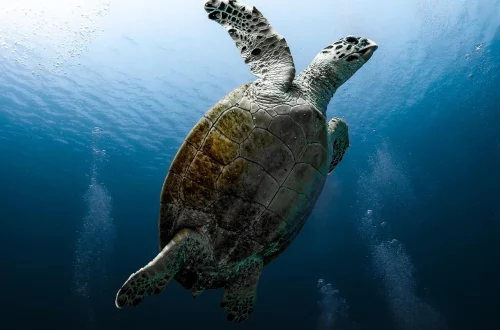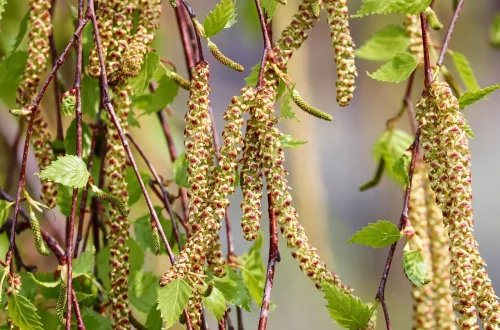
Choosing the Best Substrate for Your Afghan Leopard Gecko Habitat
Creating an optimal habitat for an Afghan Leopard Gecko is crucial for its health and well-being. As a unique species within the reptile community, these geckos require specific environmental conditions to thrive. One of the most significant aspects of their habitat is the substrate, which serves multiple purposes beyond just aesthetics. It can influence humidity levels, provide a comfortable surface for the gecko to walk on, and even play a role in behavioral expression, such as burrowing and foraging.
Choosing the right substrate can be a daunting task for both novice and experienced reptile enthusiasts. With various options available on the market, it’s essential to consider factors such as safety, maintenance, and suitability to the gecko’s natural behavior. The right substrate can not only enhance the habitat’s appearance but also create an environment that encourages natural behaviors, leading to a healthier and happier pet.
In this article, we will explore the various substrates available for your Afghan Leopard Gecko’s habitat, focusing on their benefits and potential drawbacks. By understanding the unique needs of this species and the role that substrate plays in their environment, you can make an informed decision that contributes to their overall well-being.
Understanding the Natural Habitat of Afghan Leopard Geckos
To choose the best substrate for your Afghan Leopard Gecko, it’s essential to first understand its natural habitat. These geckos are native to the arid regions of Afghanistan and neighboring countries, where they inhabit rocky terrains and dry grasslands. Their environment is characterized by fluctuating temperatures and varying levels of humidity, which they can adapt to with ease.
In the wild, Afghan Leopard Geckos primarily engage in behaviors such as burrowing and hiding among rocks and vegetation. This natural instinct should be taken into account when setting up their habitat. The substrate you choose should mimic these conditions to allow them to express their natural behaviors.
Natural substrates like sand or soil can help replicate this environment, allowing geckos to dig and explore. However, it is crucial to monitor the substrate’s moisture content and consistency, as overly dry or damp conditions can lead to health issues. For instance, too much moisture can encourage the growth of harmful bacteria and fungi, while excessively dry conditions can lead to dehydration.
When considering the natural habitat of Afghan Leopard Geckos, it’s important to strike a balance between creating a visually appealing setup and providing the necessary environmental enrichment. This can be achieved by incorporating various elements like rocks, hides, and climbing structures, along with the right substrate.
Ultimately, understanding the natural habitat of your gecko will guide you in selecting a substrate that not only meets their physical needs but also supports their psychological well-being.
Popular Substrate Options for Afghan Leopard Geckos
There are several substrate options available for Afghan Leopard Geckos, each with its own set of advantages and drawbacks. Some of the most popular choices include:
1. **Reptile Carpet**: This synthetic material is easy to clean and does not pose a choking hazard. It provides a soft surface for the gecko to walk on, making it a popular choice among pet owners. However, it does not allow for burrowing, which may limit the gecko’s natural behaviors.
2. **Sand**: A natural substrate option, sand can emulate the gecko’s wild habitat. It allows for burrowing and can be aesthetically pleasing. However, it’s essential to choose a safe, non-silica sand to avoid respiratory issues. Additionally, sand can be challenging to clean and may lead to impaction if ingested.
3. **Coconut Fiber**: This substrate is biodegradable and helps maintain humidity levels, making it an excellent choice for geckos that require a bit more moisture. It can also be used for burrowing behaviors. However, it may require more frequent cleaning than other options.
4. **Soil Blends**: A mix of organic soil and sand can provide a natural environment that supports burrowing and moisture retention. It’s essential to choose chemical-free options to ensure the gecko’s safety. However, soil can become compacted and may need to be replaced more frequently than other substrates.
5. **Paper Towels**: While not the most natural option, paper towels are an easy-to-clean substrate that can be a temporary solution, especially for young geckos. However, they do not allow for natural behaviors like burrowing.
When selecting a substrate, consider your gecko’s behavior, your maintenance routine, and the overall aesthetic you want for the habitat. Each option has its pros and cons, so it’s essential to weigh these factors carefully before making a decision.
Factors to Consider When Choosing Substrate
Choosing the right substrate for your Afghan Leopard Gecko involves considering several important factors.
**Safety**: The substrate should be safe for your gecko. Materials that can cause choking or ingestion issues, such as small gravel or fine sand, should be avoided. Always opt for substrates that are specifically designed for reptiles and are free of harmful chemicals.
**Maintenance**: Some substrates require more maintenance than others. For instance, sand may need to be replaced more frequently due to cleanliness issues, while reptile carpet may require regular washing. Consider your schedule and how much time you can dedicate to cleaning and upkeep when making your choice.
**Moisture Retention**: Depending on your gecko’s needs, you may want to consider how well the substrate retains moisture. Coconut fiber and soil blends can help maintain humidity levels, which is crucial for the health of your gecko. Conversely, if your gecko’s habitat requires lower humidity, sand may be a better choice.
**Behavioral Needs**: Afghan Leopard Geckos are natural burrowers, so choosing a substrate that allows them to exhibit this behavior can be beneficial. Sand, coconut fiber, and soil blends all provide opportunities for burrowing, while reptile carpet does not.
**Aesthetic Appeal**: Finally, consider how the substrate fits into the overall look of the habitat. While functionality is essential, you also want to create an attractive environment for both you and your gecko.
In conclusion, taking the time to evaluate these factors will help you make an informed decision when selecting the substrate for your Afghan Leopard Gecko’s habitat. A well-chosen substrate can enhance your gecko’s life and create a thriving environment.
Maintaining a Healthy Substrate Environment
Once you have chosen the right substrate for your Afghan Leopard Gecko, it’s crucial to maintain it properly to ensure a healthy habitat. Regular maintenance not only keeps the environment clean but also prevents the growth of harmful bacteria and parasites.
**Regular Cleaning**: Depending on the substrate, you may need to perform routine cleanings. For substrates like sand, spot cleaning should be done daily to remove waste, and a complete change may be necessary every few weeks. Coconut fiber and soil blends may require less frequent changes, but it’s essential to monitor for any signs of mold or odor.
**Humidity Monitoring**: If your substrate retains moisture, it’s important to monitor humidity levels in the habitat. Using a hygrometer can help you keep track of moisture levels. Depending on the substrate, you may need to mist the area occasionally or adjust the heating elements to maintain appropriate humidity levels.
**Temperature Control**: Ensure that the substrate supports the necessary temperature gradients in the habitat. Afghan Leopard Geckos require a warm basking area, so avoid substrates that retain too much heat or moisture, which could lead to discomfort or health issues.
**Replacing Substrate**: Over time, substrates can break down, become compacted, or lose their effectiveness. Regularly evaluate the condition of the substrate and replace it as needed to maintain a clean and safe environment for your gecko.
In summary, maintaining a healthy substrate environment is key to the well-being of your Afghan Leopard Gecko. By following proper cleaning and monitoring practices, you can create a thriving habitat that promotes your pet’s health and happiness.
In conclusion, selecting the appropriate substrate for your Afghan Leopard Gecko involves understanding their natural behaviors and habitat needs. By considering various substrate options and factors such as safety, maintenance, and aesthetic appeal, you can create an ideal environment that supports their health and well-being. Remember, a well-maintained habitat not only enhances your gecko’s quality of life but also enriches your experience as a pet owner.
(Note: This article is not intended as medical advice. Please consult a veterinarian for any health-related concerns regarding your pet.)




